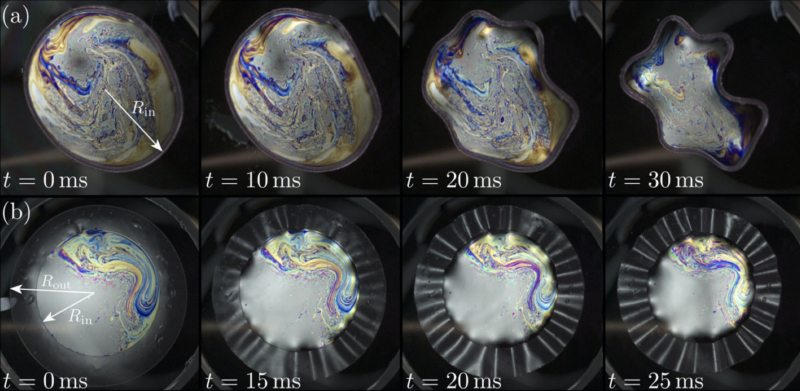Researchers count the kinks in a ring, predict their stability

Enlarge / Two rings buckling under the pressure of a soap film. The top ring is a narrow band (compared to its diameter), so it buckles inward. The bottom ring has wide walls. It wrinkles out of plane as it collapses inward. (credit: Finn Box)
I once had a PhD student who joined our research program thinking he was going to be studying a mixture of plasma physics and gas diffusion. To his surprise, he ended up having to understand the mechanics of buckling. At the time, I decided that if I never saw the fourth derivative of deflection again, it would still be too soon. Unfortunately, the physics of buckling and wrinkling is especially beautiful, so I found myself unable to resist a study on how a ring is deformed and buckled by soapy water.
Release the ringThe experiment is very simple. A ring made from a soft material is gently placed on a soap film that is suspended across an opening. The mass of the ring causes the soap film to stretch downward but then everything stabilizes. The tension applied by the soap on the inside of the ring, which would normally pull it inward, is balanced by the tension of the soap between the ring and the opening. Then, the soap film outside the ring is destroyed by poking it with a pin.
The ring starts to fall. At the same time, the surface tension of the film tries to pull the ring inward. This pull would be resisted by the stiffness of the ring, but we used a soft ring, so there's not much stiffness there. It buckles and collapses, and the researchers filmed that collapse with a high-speed camera.
Read 8 remaining paragraphs | Comments